Jamie Schneider Digital Strategist for the North American Division. Jacklyn Ruth Digital Strategies Intern for the North American Division People often ask me, “How do I make my content more relevant to young people?” My response is, “Why are you asking me, I’m 35!” If you want to reach young people, involve them, and listen to them. It stands to reason that young adults would know best how they can be reached and what is the most relevant content for them. I find myself in-between generations. I’m not really a Gen X-er, nor am I a millennial. I grew up in an analog world but became an early adopter of emerging technologies in my 20s. I also learned patience while waiting for the AOL CD to load so I could connect online (Don't understand this reference? Click here while I go check the mirror for wrinkles). I played outside all day without supervision (at that time it was still called childhood, not free-range parenting) and if I wanted to know what my friends were up to, I showed up at their house (nowadays that would be considered rude and/or creepy). Bullies were confined to schools, and informal sex ed was limited to school yard rumors. My micro-generation has now been termed Xennials or, my favorite, The Oregon Trail Generation. Perhaps this is why I feel well suited to act as a bridge between generations. I’ve lived my life there, not really being one or the other. As a digital strategist, this is a unique advantage. I have learned to work with both, and find value in either. Millennials want to hear the wisdom of the older generation, and they can be eager to learn. They also need respect and understanding of their unique circumstances. The issues I faced as a teenager in the ‘90s are nothing like what they are dealing with now. I can’t imagine or relate. So what would make me think I know what content is most relevant to them? No, my role is different. I have knowledge regarding strategy, communications, advertising, planning, etc. They speak the right language and understand the culture; they simply need guidance. Spiritually, they need wisdom from the older, more experienced generations. But they know best how to translate it to reach their own. You’re not going to like this, but it’s not about you. It can’t all come from us. It’s about them and what they need. It’s about the language they speak and issues they face. Now, there’s a lot of knowledge that can be passed onto them. They need guidance to achieve goals while maintaining the freedom to be creative and relevant in ways that make sense to them. It’s my job to equip and train young people to implement a comprehensive digital strategy: empowering them to become life-long digital evangelists, while challenging them to think differently. This means letting go of complete control, letting them do what they think is best. But before you cringe, let’s remember that the Seventh-day Adventist church was founded by teenagers. They are capable. Society tends to infantize them, instead of recognize them as young adults with passion, energy, and drive. They may want to do things differently, and that’s okay. If it goes badly, we can help guide them out of a predicament, but We can’t both reach them while simultaneously excluding them. The family unit was meant to be more than just a mother, father, and children. Traditionally, a family unit consisted of multiple generations working together as one for shared goals, survival, support, and spiritual understanding. We don’t have this structure in North America anymore. Some “smart” social scientists convinced society to separate children and people by age. Over time, this broke down the family unit of society. Not only did we accept this model in our schools, but in our churches. We now have an us-versus-them mentality when it comes to people outside our age bracket. What I’m advocating for is bringing back that cross-generational model for evangelism. Let the generations not only coexist, but co-function in our churches and community. So my answer to you is: ask a young person…Now for a word from our current resident millennial, Jacklyn Ruth: Jackie talking now... To me, it seems obvious that figuring out how to reach my generation means actually asking one of us. It would be like me trying to reach my grandparents’ generation and not asking them for help. I don’t fully understand them or the values they grew up with. Now, I’m not saying that I know everything, but I have interacted with people my age for a while. When deciding on what to say or what to post to reach my generation, it’s mostly just me talking to myself. How would I want to hear this? What topics do I want to hear about? I’ve also heard what some of my peers have to say, so I know some of the topics millennials would like to hear more about. I think my generation is the greatest untapped resource. We are consistently condemned by older adults for being full of ourselves or glued to our phones. You say you want to keep us in the church? Then let us help you. Reaching people online is not about becoming internet famous, so if you let us help, I’m sure we could make a real positive difference for Christ. You want to reach us. You want to be relevant, but don’t know how. Listen. Give us the space to share our insights and listen to our ideas. Then, let us do it. We have the understanding, you have the know-how. Show us how to do it, and we can do it. There is no one better to reach my generation than my generation. Don’t believe me (Jamie Jean Schneider speaking now), here are some real-life examples…
To help with #Gorgeous2God, a blog aimed at teen girls, we brought in a young female intern to help with social media and to hopefully increase relevance. Guess what? Our target audience liked her posts better than mine on social media. Of course they did; she’s closer to their age and speaks the same language. That’s not a failing on my part. I can’t do everything, nor am I all knowing. My job is to teach, guide, and mentor. Also, #iBelieveBible has now reached over 65,000 followers on Facebook. Why is it successful? The #iBelieveBible project is built upon content created by young adults for young adults. Young people are choosing, directing, and creating the content with strategic guidance and input from the older generation. See the pattern? Practically, what you should do is include young people on your creative team. If you produce videos, involve them. Oh, and actually include their input. They will figure out quickly if you’re disregarding everything they say. It’s okay to have the older generation in videos too, but it should be a dialogue between the generations. Agree? Disagree? Have a different opinion? Share your thoughts with #DigitalEvangelism. Paul Hopkins Director of Social Media + Big Data, North American Division Part 3 in our series on "Politics, Race & Religion."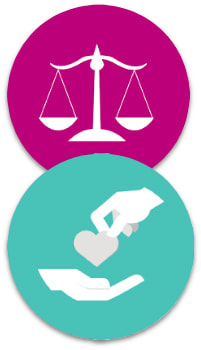 Bureaucratic activist and/or people with strong political convictions loosely throw a phrase like “American Values” about when the honest statement is, “The values of the party / group I identify with or represent.” Rhetoric feels good. I get that. It’s a comfortable place to pitch your tent, mingle with like minded people, laugh at the ludicrous extremes of the other side. But it’s still only half of the pie. For example, special interest groups exist to give voices to the values of the constituents and parties they represent. They are both beloved and hated universally for being singularly focused and narrow minded. The National Rifle Association (NRA) will tell you that it lobbies on behalf of people who care about its “second amendment right to bear arms.” For people to sustain their constitutional right to carry weapons such as handguns for protection, or shotguns and rifles to hunt. All true. What they don’t want to talk about is gun registration, background checks to ferret out criminals and the mentally unstable, or banning assault-style weapons or high-capacity ammunition clips that are the hallmark of shooting massacres. Labor unions will tell you that they provide better working conditions, higher wages and benefits, job protection and the influence of a collective voice. All true. What they won’t tell you is that they also protect unproductive employees, cause prices for services and fees to increase for employers, which are often passed on to consumers, and contribute to environments that are as combative as they are cooperative. Politicians, special interest for both sides and voters on the left and right do believe in and represent American values, but speak completely different languages. Their framework of value is biased, and the heart of why the right and the left are so far from one another may come down to where each party, and individuals within those parties, reside on the continuum of ethical values versus moral values. These words are not to be confused and are not interchangeable, nor does it mean that people have to be one or the other. People can be both, or neither, but have the proclivity to let ethics or morals define a greater part of their lives and beliefs. So what is the difference? Ethics is a fundamentally utilitarian belief that good and bad choices should be based on outcomes rather than on the actions needed to get there (outcomes > intentions). Ethics also refers to rules that groups provide. This stands in contrast with the moral reasoning of the Judeo-Christian tradition that there should be an objective standard for right and wrong (intentions > outcomes), and an individual’s own principles regarding right and wrong should guide that reasoning. To speak to both points, the means and the ends should be morally and ethically permissible, but they are not. Ian Welsh, the blogger, says the best short definition he’s heard is “Morals are how you treat people you know. Ethics are how you treat people you don’t know.” A better understanding of ethics based and moral based upbringings may explain why many foster these values throughout their lives. From an early age, Republican homes focus on strict parenting that creates self-reliant children who are told that “the world owes you nothing.” This atmosphere of rewards and punishment is thought to build character from hard work and discipline. The young are taught to believe that life is difficult with tangible evil, and it rewards none with participation trophies. Right is right, and wrong is wrong. Preserve the good things in life, and build your community on the moral-based principles of “Do unto others…,” weakness of mind, body and character and the tolerance of it is immoral, because it implies being unable to stand up to evil. Punishment is required to balance the moral books: If you do wrong, you must suffer a negative consequence. Self-reliance is key to all good accomplishments. Democratic homes by contrast have an atmospheric presence of protection and communication. Empathy and empowerment help to ensure growth rather than punitive fear. In the Nurturant Parent family, it is assumed that the world is basically good…or could be with oversight. And, however difficult the world may be at present, it can be made better, and it is our responsibility to help to make it better. Correspondingly, children are born good, and parents can make them better, and it is their responsibility to do so by providing safe spaces for them to maneuver and grow. It’s no wonder we see the world so differently. But would you be surprised if I told you that it’s not what one believes that is the only or the greatest source of friction: It is the byproducts of our ethical and moral values. We can theoretically agree that many of the same things are good or bad. For instance, let’s start with crime. The Public Religion Research Institute, which is an American nonprofit, nonpartisan research and education organization that conducts public opinion polls on a variety of different topics, says that 57% of Democrats say crime is a critical issue compared to 53% of Republicans (The largest differences between the priorities of Democrats and Republicans are on the issues of economic inequality, cost of education and climate change ). It’s an area where both showed slightly higher-than-average levels of concern. It’s a difference of 4%, but it may as well be 400% because both view crime through vastly different lenses. Democrats focus on the idea that:
Republicans, by contrast, focus on the idea that:
And this is the heart of our conundrum. Alone, each statement is something with which you may or may not agree, but when paired together with its core value counterpart, it becomes toxic. Each is an example of what I’d like to call core value byproducts. Let’s look at the following image as an example…with definitions. Core Values are things or ideas that are held in the highest regard by an individual or a group. Neutral values are things or ideas that may or may not be valued by individuals or groups. Core anti-values are things or ideas that are despised by an individual or group. Core Value byproducts are fundamental values from one group that contribute to byproducts that clash with the core fundamental values of another group. With this in mind, let’s revisit the values… A Core Republican Value = Punish the guilty. Most Republicans believe that punishment of the guilty is not only desirable but necessary. That is a core value focal point…but doesn’t tell the whole story. In today’s society, many innocent people have also been wrongly convicted. There is also a disparity in criminal sentencing, which has ruined lives and caused justifiable outrage in communities most affected by these actions. The National Academy of Sciences has used a survival analysis model to determine that 4.1% of defendants sentenced to death would be exonerated if they remained on the sentence indefinitely.(#5) The actual rate isn’t as high because many defendants plead out death sentences for life sentences. That speaks as much to fear of death as it does to a person’s guilt. It also makes one wonder how many innocents are serving life sentences. What it the effect on these men and women, and their families? The Ohio State University has estimated that about 10,000 are wrongly convicted of serious crimes each year. (#6) That’s alarming. As a visual comparable, according to the 2002 U.S. Census of Governments, there were more than 31,000 local general-purpose governments with fewer than 10,000 residents in the United States. The “wrongly convicted rates” could be likened to gathering up entire communities and then bussing them off to be locked away. That’s frightening, and more so when you think a community of that size is gathered up like that on a yearly basis. On the flip side… A Core Democratic Value = Protect the innocent. If you are a Democrat, one’s plight to protect innocent people may mean that you are sometimes willing to turn a blind eye to major and petty crime if it “balances the books.” But how harmful could that be? Criminals are often repeat offenders, so everyone that avoids punishment is more likely to steal, assault or murder someone again than not. By keeping offenders free, everyone is put at higher risk. And those that are incarcerated also pose a risk when released. A study from the Bureau of Justice showed that the recidivism rate of criminals released from 2005-2010 within a 30 state sampling was 68% within three years, and 77% within five years. (#7) Iowa State University did a study that calculated the societal cost of the five major crimes of: murder, rape, armed robbery, aggravated assault and burglary. Societal costs included victim costs, criminal justice system costs, lost productivity estimates for both the victim and the criminal, and estimates on the public's resulting willingness to pay to prevent future violence. The numbers are mind boggling. Murder $17.25 million; rape $449 thousand; armed robbery $336 thousand; aggravated assault $145 thousand; and burglary $41 thousand. (#8) These are facts. So why is it so hard to acknowledge that both criminality, and wrongful incarceration, are things that we should both be very concerned with and work toward? The Psychological Bulletin, a journal published by the American Psychological Association, analyzed data from 91 studies involving nearly 8,000 participants. University of Illinois psychology professor Dolores Aibarracin, who led the study, noted some interesting findings.
It seems sinful to be so focused on our own values, that we are unwilling to expose ourselves to other ideas, or to debase the views of others without really understanding them. I am struck by the clarity of God’s word about crime, punishment and innocence. “Do not pervert justice; do not show partiality to the poor or favoritism to the great, but judge your neighbor fairly.” Leviticus 19:15 “For I the LORD, love justice; I hate robbery and wrong doing. In my greatness I will reward my people and make a covenant with them.” Isaiah 6:8 “Whoever says to the guilty, “You are innocent,” will be cursed by peoples and denounced by nations. But it will go well with those who convict the guilty, and rich blessing will come on them.” Proverbs 24:24-25 “Learn to do right; seek justice. Defend the oppressed. Take up the cause of the fatherless; plead the case of the widow.” Isaiah 1:17 “Punish crime and defend the innocent. For the wrongdoer will be paid back for the wrong he has done, and there is no partiality.” Colossians 3:25 “So speak and so act as those who are to be judged under the law of liberty. For judgment is without mercy to one who has shown no mercy. Mercy triumphs over judgment.” James 2:12-13 Punish the guilty. Bestow mercy. Show no favoritism. Defend the innocent. It seems pretty clear. Let’s look at two more core values with their charts. Again, the values are largely noble, but the value byproducts go against the core being of those that don’t share your values…and again speaks to the ethical versus moral worldview issues that we have. A Core Democratic Value = Help the Disadvantaged A Core Republican Value = Reward Hard Work Do you see the endless cycle? Again, two noble values. And again, value byproducts that essentially render our agreement on the initial values as moot points. I recognize your value. I may even feel positive about your value. But the value byproduct of your core value is so offensive to my being, that at best, I’ll ignore your value, and at worst, I’m willing to destroy any chance you’ll have at seeing it come to fruition if I know my core value is being ignored and trampled upon. (#1) https://www.census.gov/prod/2013pubs/p20-568.pdf (#2)http://www.businessinsider.com/exit-polls-who-voted-for-trump-clinton-2016-11/#more-women-voted-for-clinton-as-expected-but-trump-still-got-42-of-female-votes-1 (#3) https://braindecoder.com/post/politics-neuroscience-1282982492# (#4)http://www.complex.com/pop-culture/2014/11/a-history-of-frenemyship-of-jon-stewart-and-bill-oreilly/ (#5) http://www.pnas.org/content/111/20/7230 & http://phenomena.nationalgeographic.com/2014/04/28/how-many-people-are-wrongly-convicted-researchers-do-the-math/ (#6) https://researchnews.osu.edu/archive/ronhuff.htm (#7) https://www.bjs.gov/index.cfm?ty=pbdetail&iid=4986 (#8) http://www.news.iastate.edu/news/2010/sep/costofcrime Jacklyn RuthDigital Strategies Intern for the North American Division When creating and executing a social media campaign, think of who you are speaking to and how to best convey that message to different audience groups. We do this in everyday conversations without even knowing it. It is natural to speak differently to a child than to an adult. There is a difference in word usage and tone of voice. Children may need to hear something simplified, while an adult can understand more abstract ideas. The same concept applies to social media. When communicating to social media audiences, visualize actual people--their interests, culture, wants, needs, and expectations--to refine your voice. Depending on what is being promoted, you will create unique people and personas to represent different target groups. For example, the Society of Adventist Communicators Conference is promoted to and attended by students, teachers, and working professionals. Each target group has different reasons for attending the conference that range from continuing education to networking. Therefore, you would create personas representing students, teachers, and professionals identifying their specific wants and needs. Determining your audience personas can act as a guide to creating content that will be the most relevant and useful to your various audience groups. According to The Guardian, personas can be simply defined as: “A fictional character that communicates the primary characteristics or a group or segment of your audience and takes into consideration needs, demographics, motivations, and environments.” This is the kind of information you will want for each persona: (Photo from: https://blog.bufferapp.com/marketing-personas-beginners-guide) Some of this information can be found in your Google Analytics account. There you can find information on audience age, gender, salary, and location most of your audience is coming from. Google Analytics can also give you the interests of most of your audience. Learn more about Google Analytics. This information is key in creating your personas. You can also glean consumer information from your social media insights, and even one-on-one interviews. You can learn a lot from people who are part of your target audience that you engage with directly. The best personas combine both quantitative and qualitative information. This exercise is about putting yourself in the consumers’ shoes. Get to know what they want so you can meet their needs effectively. Social media is about connecting people with people to create a collective story or conversation. Understanding your audience is vital to bridging the gap and building meaningful relationships that result in something to enjoy in the real world. After you have finished your research, begin creating your personas. Here is an example of what a detailed social media persona might look like: (Photo pulled from: https://blog.bufferapp.com/marketing-personas-beginners-guide) Now, when applying this idea to Adventist events, such as Pathway to Health, (a ministry that provides entirely free, mobile, multi-specialty clinics that offer medical, surgical, dental, and eye care, along with other critical services), you can modify the example we have above. For instance, when promoting Pathway to Health, we must consider who will be coming, such as the under insured, struggling families, and the homeless, and who will be volunteering to help, such as: doctors, local volunteers, and pastors. Below is an outline of one person who might want to volunteer if the right information was put in front of them. You can even add a fake picture of them if you so desire. Name: Pastor Aubrey Who: A local youth pastor looking for a way to get church and kids involved in service. Age: 29 Yearly revenue: $30,000 Goals and challenges: Goal to get church involved in the community. Challenge is can’t find a way to get involved. Interests: Volunteering, church, youth ministry, service, community events, and hiking. Promotion media: church networks, social media, local conferences Message: We need everyone at Pathway to Health! Medical and non-medical volunteers to serve the needy in the community. Show the love of Christ through compassion. Knowing this information, how are you going to word a social media post to get them to help? You could emphasize the need for volunteers (even if they don’t have any medical experience) and what things are needed.
This tactic serves two purposes: First, it gets the creators to get into character. Second, it can help you find previously undetected tactical opportunities to promote your product, service, or institution. In summary, social media personas are developed based on your target audience. The key is finding out what those people want and need; the rest is simply compiling those qualities into a made-up person. As a church, we need to constantly find ways to reach our audience for the kingdom in the best, most efficient way possible. And social media personas help us step into other’s shoes so we can better understand them. Don’t forget to tag us at #DigitalEvangelism as you develop your creative personas. Adam Fenner Director of the Adventist Learning Community James Gigante Media Director of the Adventist Learning Community In Matthew 28:16-20, Jesus gives his last charge to his followers before leaving Earth. “Therefore go and make disciples of all nations, baptizing them in the name of the Father and the Son and of the Holy Spirit, and teaching them to obey everything I have commanded you.” Because of technology the Seventh-Day Adventist Church now has the tools necessary to exponentially increase the speed and efficacy of our efforts in fulfilling Christ’s Great Commission. Name the issue, topic, or belief that needs to be shared with the world, and digital technology can help spread our unique Adventist message anywhere and anytime. One of the most important questions facing our world today is the age of the Earth. The Bible begins with the story of how God spent an entire week of His time, designing, crafting, and speaking the world into existence. The Creation story lays the foundation of truth for the rest of the Bible. However, much of the popular culture and Christian debate on this subject is discourteous and impassioned. Creationists, evolutionists, and theistic evolutionists often share their views in the media, pulpit, and classroom as if they had little respect for the intellect or beliefs of their respective audiences. With emotions running high and politically incorrect rhetoric the norm, our Church should be a voice of reason and loving interaction. An informed and compassionate Creationist is a much more effective evangelist than one that relies on uninformed passions. The spiritual stakes are high on this issue, and so we should take it seriously and educate ourselves to help others see God’s involvement in the origins of our planet. To help buttress scientific support for the Young Earth Model of Creationism, the Seventh-day Adventist Church’s Faith and Science Council has provided the funding necessary to write and distribute a free digital text version of Faith, Reason, and Earth History: A Paradigm of Earth and Biological Origin by Intelligent Design (3rd edition). Written by renowned geologist Leonard Brand, PhD, and celebrated paleontologist Art Chadwick, PhD, the free eBook can be downloaded by anyone in the world interested in the science behind a more Biblically accurate understanding of Creationism.[1] In Faith, Reason, and Earth History, Drs. Brand and Chadwick provide a researched perspective for contemplating Earth’s origins in terms of Scripture and science. After reading the free text, it becomes apparent Creationism is supported in many ways by scientific observation. However, the authors are fair to both science and Scripture and point out there are questions and issues that remain for both creationist and evolutionary scientists. Brand and Chadwick maintain creationists have no need to approach science with trepidation and apprehension, and that it is possible to have enough intellectual humility and admit all sides of the discussion have unanswered questions about the origins of the planet. Simply making a resource for evangelism and truth available for free is only part of the Church’s responsibility. Having a powerful resource without a marketing strategy means the resource could potentially sit on the proverbial shelf gathering dust with only a few people appreciating it. This is why the North American Division’s Adventist Learning Community partnered with Andrews University Press, and the General Conference Communication and North American Division (NAD) Big Data and Social Media departments to market this valuable text. By developing a marketing strategy with Jamie Jean Schneider of Big Data and Social Media, the Adventist Learning Community (ALC) developed distribution platforms, eBook formats, and a marketing campaign for sharing the resources with the world. In less than 3-months, the book has been downloaded for free over 13,000 times. Typically, a best seller in Adventist publications sells approximately 5,000 books. By not printing the book, we saved thousands of dollars ($12,000). $300 of that savings is now being used to market the book online allowing for greater reach than the printed book (1,000 copies) would have received at a fraction of the cost. By utilizing imagery from a documentary ALC filmed for Drs. Brand and Chadwick entitled, “Dry Bones and Fossil Trackways - Geology Research from a Biblical Perspective”, a promotional “trailer” for the book was developed. This trailer was then incorporated into a promotional template provided by NAD’s Social Media and Big Data department. The subsequent promotional package was then shared with social media directors around the Church. These digital gatekeepers then became social media ambassadors for the advertising campaign for the textbook. Within a matter of days, Brand and Chadwick’s text was being marketed on Facebook, Twitter, and internet search engines. The Seventh-day Adventist Church has historically been an early adopter of technology to further the Great Commission. The distribution success of Faith, Reason, and Earth History is proof the Church should continue to embrace technology as a tool for furthering evangelism, and that incorporating a digital marketing strategy can exponentially increase the reach and impact of the Church’s resources and efforts. The tools for reaching the world are readily available and surprisingly inexpensive, the Church just needs to decide to use them in a strategic and intentional fashion. Learn more about the book and download. Download the promotions packet and become a social media ambassador.
Paul HopkinsDirector of Social Media + Big Data, North American Division Part 2 in our series on "Politics, Race & Religion." Read the following statements about the past two elections.
What do you think? Your answers will likely come from a bevy of factors, which will include ethnic origin, socio-economic background, geographic locale, upbringing and political persuasion. On top of this, neuroscientists say that biology may play a part in the structural differences within the brains and identities of Democrats and Republicans. Our political biases, predispositions, and values are tied into a part of the cortex that rewards us for defending our own political perspectives and resisting ideas that do not jibe with our views or lifestyles. (#3) So depending on your affiliations, your leanings and some science… the reasons people voted for these parties, or opinions about why others voted for those parties will vary greatly. That’s not unusual. However, it is troubling that the most consistently conservative and liberal bases are quickly sliding apart, signaling a shift toward a more drastic view of those who don’t look and/or think like you do. The middle has lost ground, and the most extreme ideological groups within both parties are shifting even further along the fringes of those floating bases. 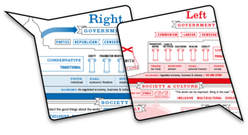 This would work for any of the responses, but let’s select one listed above from Republicans and one from Democrats regarding why they voted for a particular candidate or party in 2012 and 2017. Some Republicans said, “I felt that the Democratic party focused on issues that aren’t relevant.” If you are a Democrat, I’d like you to think for just a moment what that means to you. Some Democrats said they voted the way they did because, “He (Obama) embodies my hopes, dreams and aspirations.” As a Republican, what does that mean to you? When people know that you are tracking their responses, their words become measured. Their emotions and deeper feelings about an issue are masked to protect themselves from criticism and something that disrupts their stability and balance. So for this part, I’ve asked several people I know about those statements. But as open and honest as I know many of them to be, they, like you or I, still might hold back. I asked the Democrats what they thought about the Republican response of “I felt that the Democratic party focused on issues that aren’t relevant.” But rather than waiting for their responses, I offered my own: “You know, important issues like inbreeding,” followed by “Like keeping White hope alive since 1776!” or “Like keeping Mexican food inside the border…at least the food part.” The responses? Smiles, light laughter, some nods. I asked the Republicans what they thought about the Democratic response of “He (Obama) embodies my hopes, dreams and aspirations.” And again, rather than waiting for responses, I said, “You know, aspirations like collecting a bigger welfare check to cover their luxury car payments?” followed by “Like being tolerant unless someone disagrees with them.” Or, “Like dressing up as a Democrat for Halloween and forcing people to hand over candy.” Same responsive cues. When I made the same digs about their political parties that I’d shared with the other group, the laughter was less robust, or muted. Even a few icy stares. (We’re all still friends…). I did this because I wasn’t chasing canned responses, but wanted a gut-check reaction to see if I could tap into the worst fears and thoughts we have about others. Laughter is harder to mask than thoughtful insight…because it’s instant. And I don’t think it’s because any of those people (White, Black, Hispanic and Asian) are bad…it’s because we’re human. It’s because the worse you appear and the lower I can depict you, the better I seem. It’s easy to demonize people who don’t look or think like we do. To reduce others to caricatures of laziness or racism. Of sexist xenophobes or entitled race baiters. If one wants to find the bad in people, one can, and one will. It’s convenient to think of ourselves and our views as forward thinking, noble and above moral scrutiny. The Bible says otherwise. “Do not take to heart everything people say, lest you hear your servant cursing you. For many times, also, your own heart has known that even you have cursed others.” Ecclesiastes 7:21-22 The apostle Paul wrote, “For I know that in me (that is, in my flesh) nothing good dwells; for to will is present with me, but how to perform what is good I do not find.” Romans 7:18 You remember those two original statements… “93% of African-Americans supported Obama in the first election, and 81% of conservatives voted for Trump in the second.” The statements were facts about voter actions, and that’s all that we can and should gather from them without additional information. And people’s reasons for voting for people or parties? The answers are thoughtful when we see them as complete sentences. Republican: “I felt that the Democratic party focused on issues that aren’t relevant. Homosexuality in our town, or immigration…frankly aren’t important to the people I know. The industries that fuel this region have left or are being shut down. I worry about putting food on the table. Those other things have nothing to do with where I live.” Democrat: “He embodies my hopes, dreams and aspirations. It’s nice to see someone that looks like me leading the nation. His election says to my children that you can be anything that you want to be despite what anyone else says or thinks. And on those days that I don’t think I can do it, he also reminds me that I can.” Neither of these statements were anything more than statements. But some prefer the shorter sentences without the context because soundbites leave room for assumptions and justifications of fear and/or hatred. One speaks to the realities of people’s lives, and the other to their hopes for the future. And if I put myself in their places, who am I to disagree. Survival and hope are values on which every racial group and political party can agree. They are American values. But that phrase itself is loaded because what are those values that define our country? |
Archives
August 2020
Categories
All
|
||||||
- Home
- BLOG
-
RESOURCES
-
RESOURCE MENU
>
- ADVENTIST IDENTITY GUIDELINES
- BIG DATA RESOURCES
- BRANDING, IMAGE & DESIGN RESOURCES
- CHURCH/MINISTRY SPECIFIC RESOURCES
- COPYRIGHT & TRADEMARK BASICS
- COURSES
- EMAIL RESOURCES
- GUIDANCE FOR HIRING SOCIAL MEDIA POSITIONS
- PODCASTS
- REPORTS & CASE STUDIES
- SOCIAL MEDIA RESOURCES
- (SOCIAL) VIDEO RESOURCES >
- TEXTING 4 CHURCHES
- TRACKING & ANALTYICS
- WATCH VIDEOS & TUTORIALS
- WEBSITE TIPS
- SOCIAL MEDIA GUIDELINES
-
RESOURCE MENU
>
- SEO
- Digital Discipleship & Evangelism
- COVID-19 RESOURCES
- eNEWSLETTER




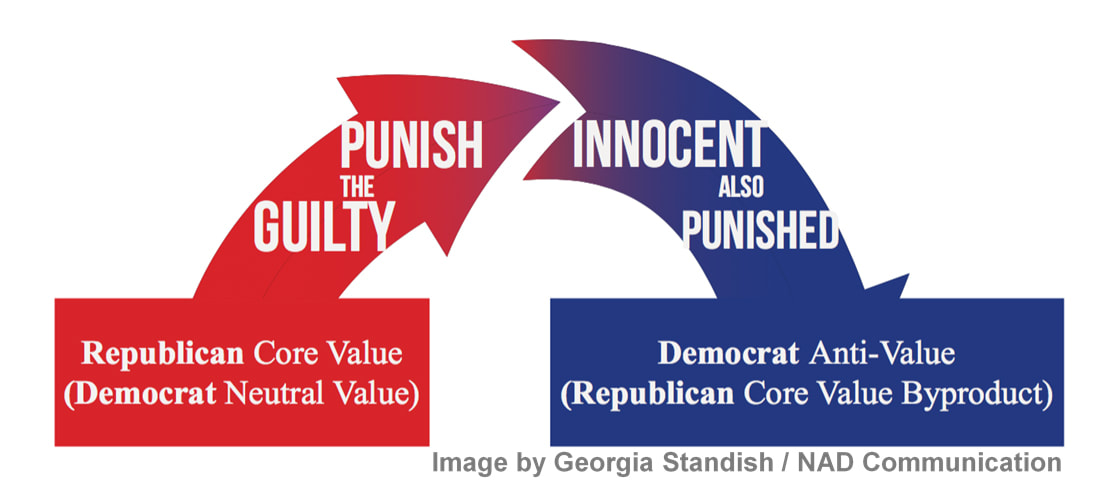
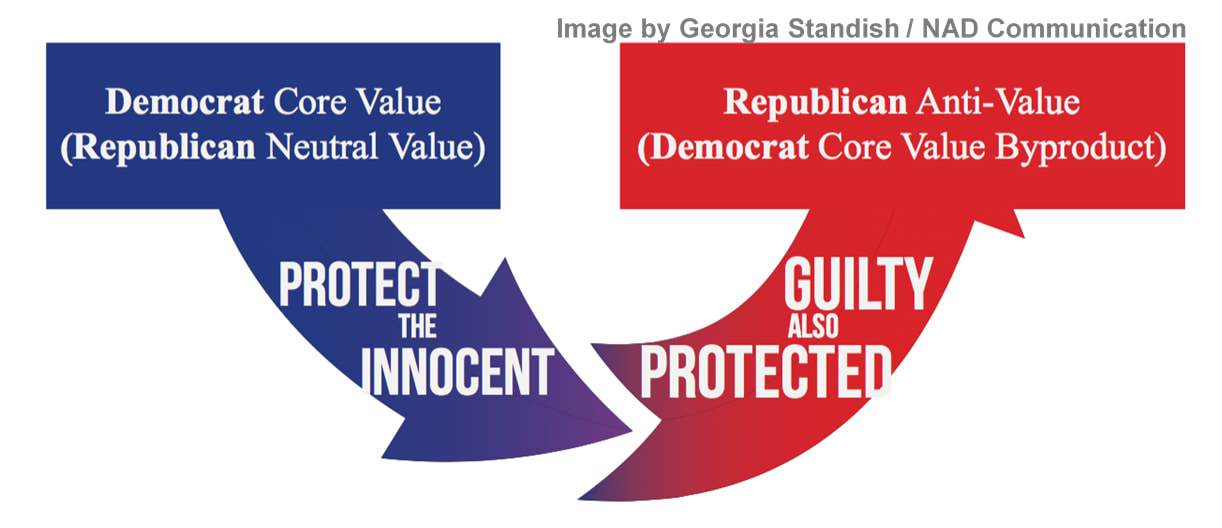
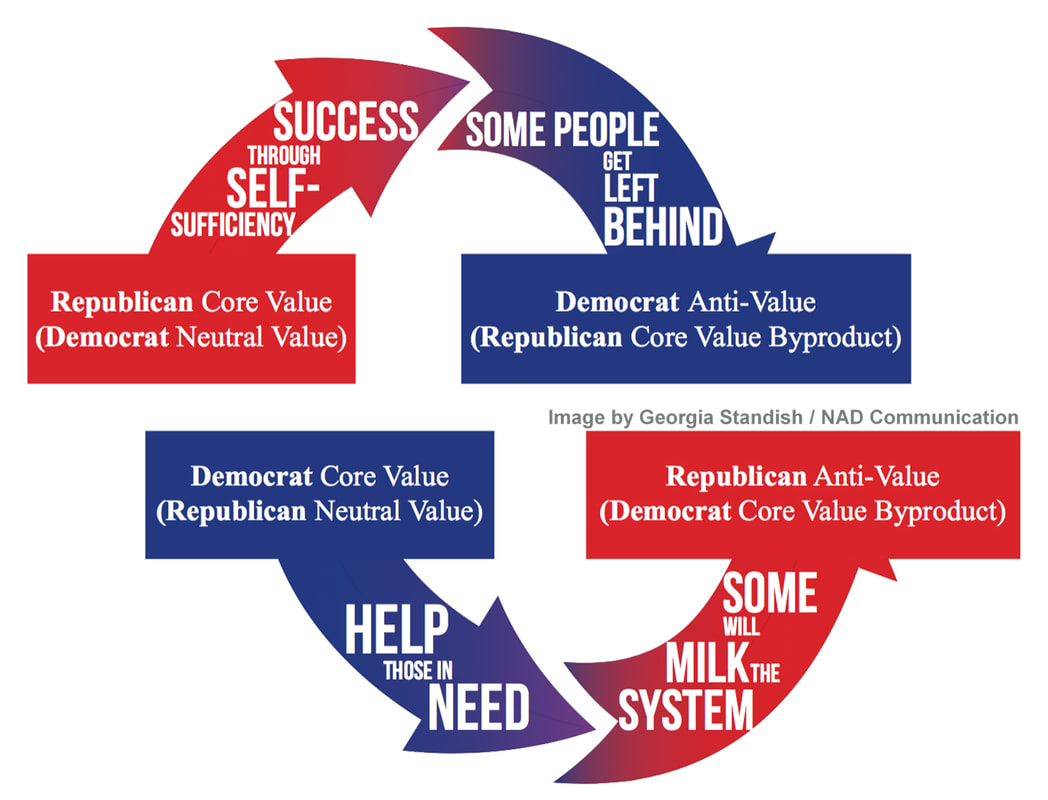



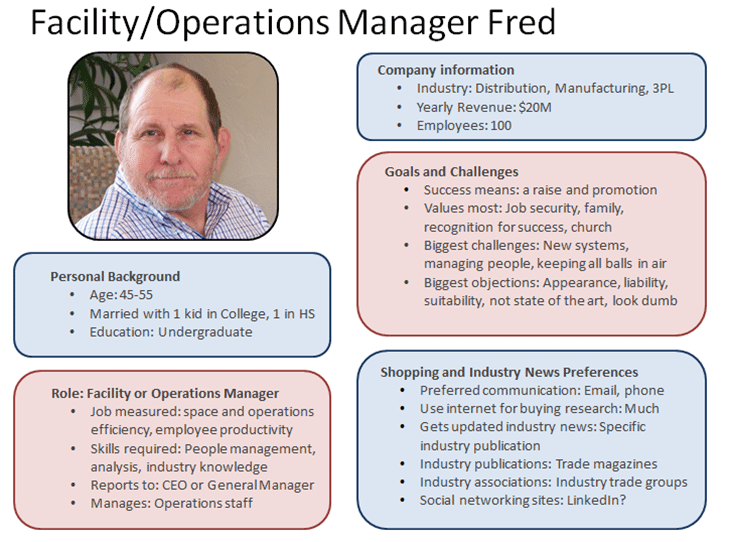


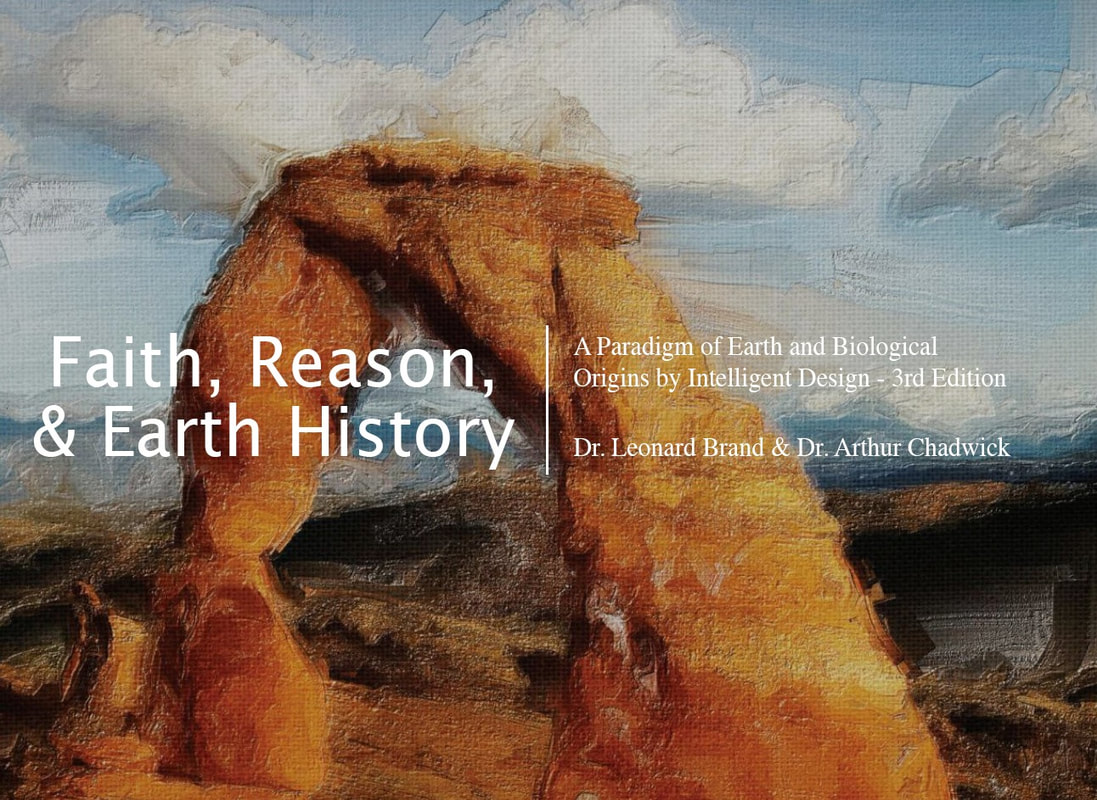
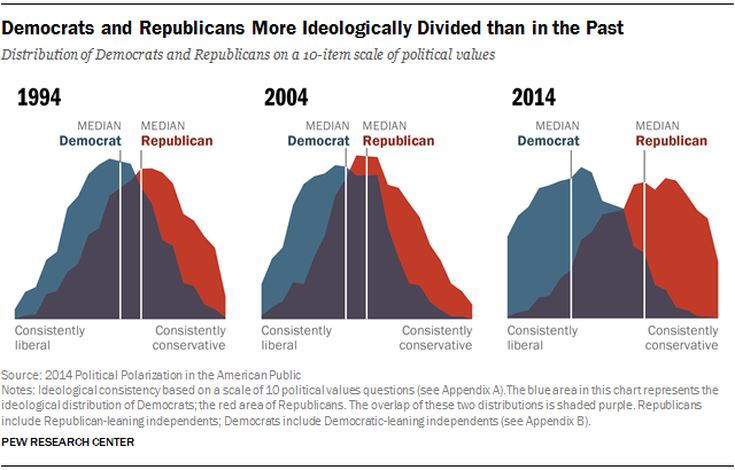
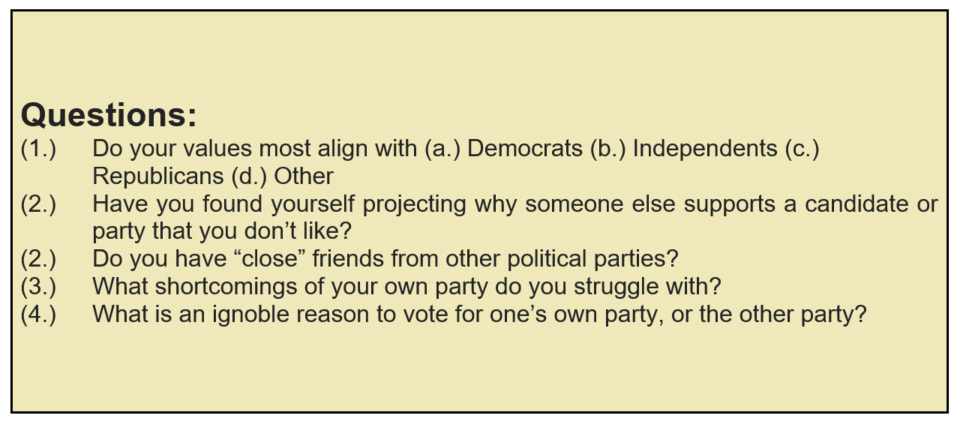
 RSS Feed
RSS Feed